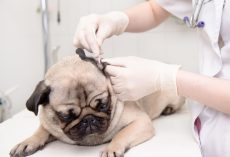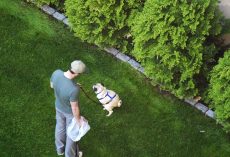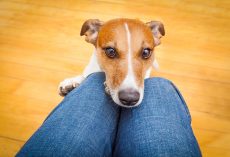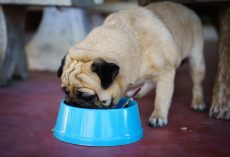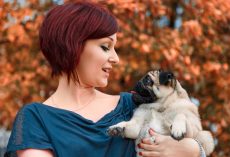Below are some excellent tips and clues on how to determine your dog’s age. If you were not there to witness his or her birth you may find this very interesting!
Teeth
All dogs like humans start out with what we laughingly call puppy teeth which could be used as hypodermic needles or as replacements set for a piranha. These start to drop out around about 18 weeks though some of the smaller breeds may start a few weeks before this. By six months all the puppy teeth should be replaced by adult teeth, however the dogs will still have a need to chew as the teeth need to set in the gums and this can take up to a year.
Diet
If you feed raw food especially with raw and meaty bones that they can really gnaw on, then this action keeps teeth fairly free of the normal build of plaque, gum infections, and tartar. Avoid the large marrow bones, especially if they have been cut length ways, these can break and damage teeth especially the upper carnassials, the three pointed teeth that can split and get infected.
Hair Skin and Coat
As in humans the hair and skin can give an indication of age. Greying round the muzzle and round the top of the head and the eyebrows can indicate onset of middle to old age, but be aware that some breeds grey far earlier than others. Reddish, yellow, or gold colour dogs often go white at the top of their head and their muzzle in middle age.
Eyes
There is something called lenticular sclerosis that can affect many dogs. It normally starts between six and eight years of age depending on size and breed. This condition is often mistaken for cataracts especially in the later stages. Dogs do get cataracts but sclerosis is far more common and can be an indicator of a dog’s age.
The early onset of this can be distinguished by thin lines across the lens of the eyes, later on say aged eight the pupil will start to get a slight grey, white, or bluish tinge.
General Abilities
Dog jumping. If your rescue dog is slow and sleeps more than he is awake then he is probably in late middle to old age. Arthritis, incontinence and weight gain can also be an indicator of old age.
A bad odour that does not appear to go away even after washing is also an indicator of dogs past their middle age and moving into old age.
The ability to jump into cars, stiffness, and joint pain though not totally the domain of old age can also be an indicator. Hearing can deteriorate in the later years though the dogs sense of smell rarely declines to any serious extent.
Dogs Ages in Human Terms
There are many old wives tales regarding dogs, most are totally incorrect, lets take one in particular. How to calculate a dogs age in human terms. The most common answer you will receive is one dog year for every seven human years.
This calculation is totally incorrect, bears no resemblance to how dogs age and their relative ages to humans. Working the calculations below, the one year old would not be like a sweet 7 year old.
As a general rule of thumb it should be fifteen for the 1st year ten for the 2nd and then four for every year thereafter. This is only an approximation. There is a chart that works on size and breeds that makes it far more accurate.
We’ve figured out from the calculations above that our Max, in human terms, is around sixty-one years old. And that makes sense. Sixty-one is not too old and he still has that bounce to his step. However, recently our vet did note lenticular sclerosis and, yes, poor Max is getting that old-age doggie odor mentioned above too!
Thanks to Doglistener for bringing all this information to our attention. It is fascinating and we think it should bring better communication and understanding between those dogs, young and old, and their confused but loving pet parents!
Featured image via Stacey Gammon Photography


